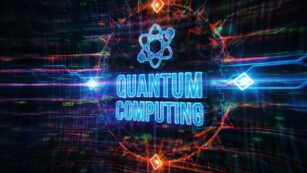
Have you ever wondered why tasks that seem simple for us, like recognizing a face or picking up an object, can be incredibly challenging for robots? This intriguing phenomenon is at the heart of Moravec’s Paradox, a concept that sheds light on the complexities of artificial intelligence and human cognition. As I delved into the world of robotics and AI, I couldn’t help but be fascinated by the disparity between tasks that are effortless for us, yet incredibly difficult for machines to master.
I’ll explore Moravec’s Paradox in depth, unraveling the reasons behind this puzzling disparity in cognitive abilities between humans and robots. From understanding the evolution of intelligence to the intricacies of programming robots, we’ll journey through the complexities of Moravec’s Paradox and its implications for the field of artificial intelligence. Join me as we uncover the mysteries behind why robots struggle with tasks that come naturally to us.
Moravec’s Paradox
The Origin and the Theorist
 Moravec’s Paradox, named after Hans Moravec, an artificial intelligence and robotics researcher, unveils a fascinating insight into the realm of robotics. Despite advancements made in technology, Moravec observed that tasks requiring high intelligence in humans, such as reasoning and problem-solving, are difficult for AI and robots. This paradox challenges our assumptions about the complexity of cognitive abilities in artificial systems compared to humans.
Moravec’s Paradox, named after Hans Moravec, an artificial intelligence and robotics researcher, unveils a fascinating insight into the realm of robotics. Despite advancements made in technology, Moravec observed that tasks requiring high intelligence in humans, such as reasoning and problem-solving, are difficult for AI and robots. This paradox challenges our assumptions about the complexity of cognitive abilities in artificial systems compared to humans.
The Core Concept Explained
Moravec’s Paradox essentially suggests that the skills humans acquire effortlessly, like vision and movement, are incredibly hard to replicate in robots, while tasks that require less conscious effort, such as complex reasoning, are easier to program. The paradox lies in the disparity between the complexities of what humans consider simple tasks and the challenges robots face in executing them.
Implications of Moravec’s Paradox
Impact on AI Development
Discussing the implications of Moravec’s Paradox on AI development, it’s clear that despite significant advancements in artificial intelligence, machines still struggle with tasks that humans find effortless. In my experience, this paradox sheds light on the challenges AI faces in areas where human intelligence excels, such as intuitive decision-making and sensory perception. It underscores the need for further research and innovation to bridge the gap between artificial and human intelligence.
Challenges in Robotics
When considering the implications of Moravec’s Paradox on robotics, I’ve observed that robots encounter difficulties in tasks that require high-level human cognitive skills. These challenges include perception, dexterity, and common-sense reasoning, which come naturally to humans but pose significant obstacles for machines.
Practical Applications of Moravec’s Paradox
Enhancements in Machine Learning
 In applying Moravec’s Paradox practically, advancements in machine learning have been pivotal. Machine learning algorithms have been developed to tackle tasks that traditionally require human-like intelligence. Tasks such as image and speech recognition, which were once challenging for machines, have seen significant improvements through the integration of complex algorithms.
In applying Moravec’s Paradox practically, advancements in machine learning have been pivotal. Machine learning algorithms have been developed to tackle tasks that traditionally require human-like intelligence. Tasks such as image and speech recognition, which were once challenging for machines, have seen significant improvements through the integration of complex algorithms.
Innovations in Autonomous Vehicles
The impact of Moravec’s Paradox on the development of autonomous vehicles has been profound. Innovations in this field have focused on incorporating advanced technologies such as computer vision and deep learning to enable vehicles to navigate complex environments autonomously. By leveraging these technologies, autonomous vehicles can perform tasks that align with human abilities, such as recognizing traffic signs, detecting obstacles, and making real-time decisions based on environmental cues.
Future Directions in AI Research
Overcoming the Paradox
 In the quest to overcome Moravec’s Paradox, researchers are delving into innovative strategies to enhance the capabilities of artificial intelligence. Advancements in machine learning algorithms play a pivotal role in addressing the disparities between human and artificial intelligence. By refining deep learning models and neural networks, scientists aim to bridge the gap in performance between machines and humans in tasks requiring complex cognitive skills.
In the quest to overcome Moravec’s Paradox, researchers are delving into innovative strategies to enhance the capabilities of artificial intelligence. Advancements in machine learning algorithms play a pivotal role in addressing the disparities between human and artificial intelligence. By refining deep learning models and neural networks, scientists aim to bridge the gap in performance between machines and humans in tasks requiring complex cognitive skills.
Predictions for AI Evolution
The future landscape of artificial intelligence evolution holds exciting prospects as researchers project groundbreaking developments in the field. Forecasts indicate a convergence of AI with other cutting-edge technologies such as quantum computing, paving the way for exponential growth in computational power and algorithmic efficiency. Anticipated advancements in natural language processing and computer vision are set to revolutionize human-machine interactions, propelling AI applications across diverse sectors.